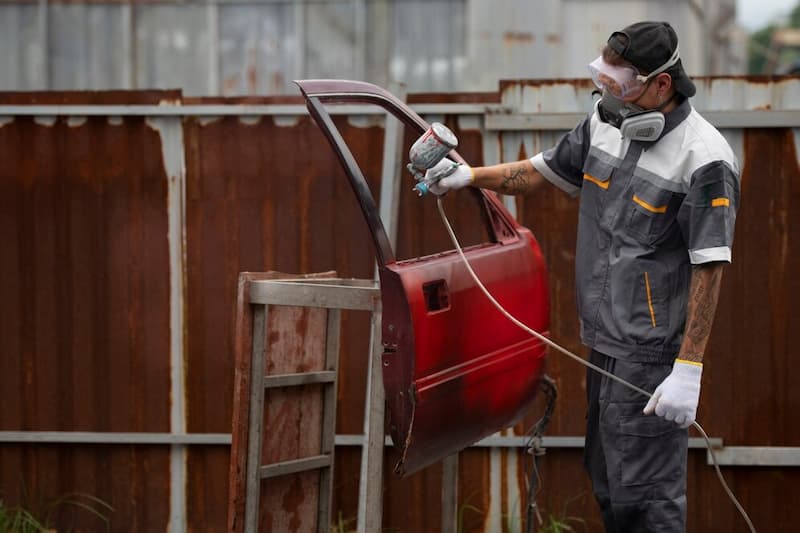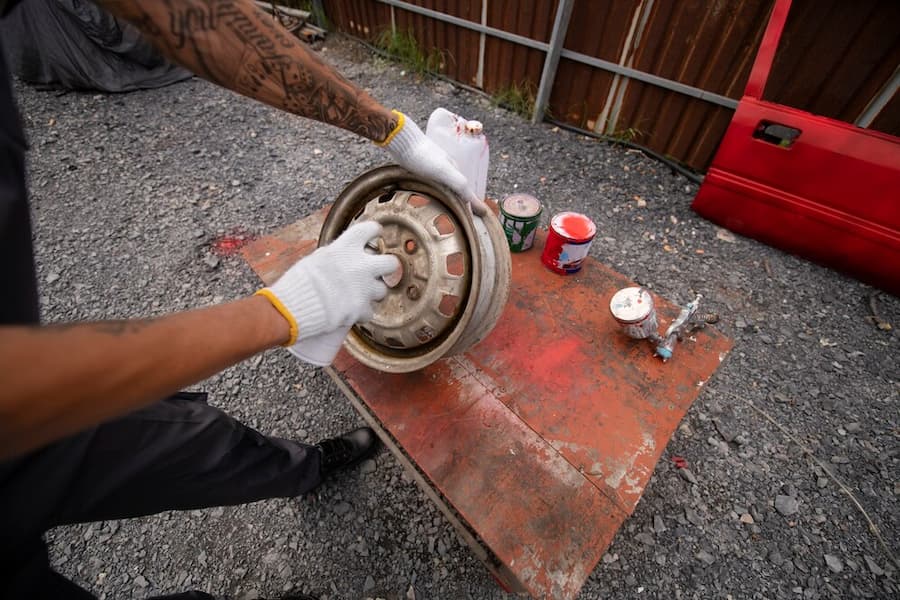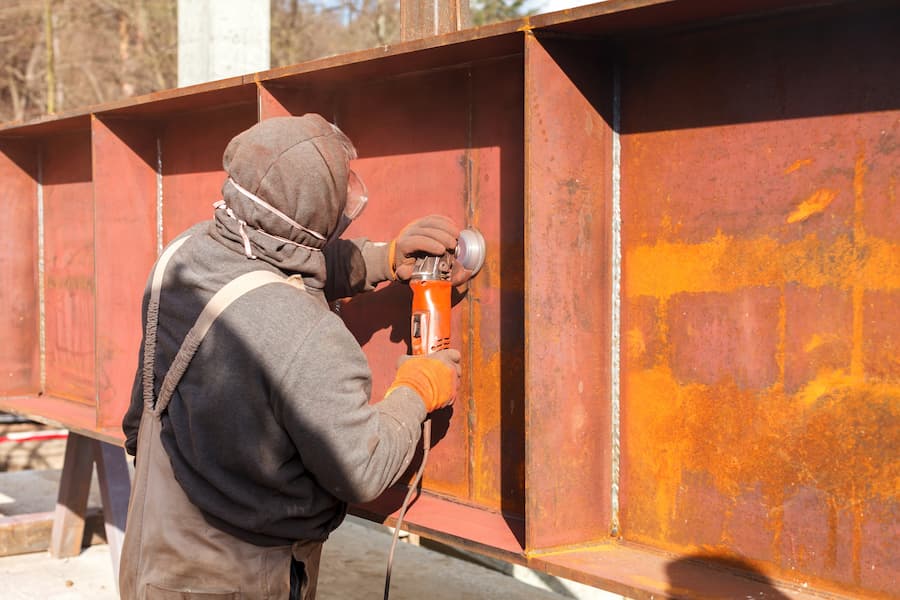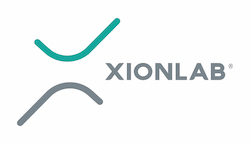No products in the cart.
Rust can cause serious damage to metal surfaces, leading to corrosion and weakening of materials. Rust neutralizers are essential for preventing rust from spreading and ensuring metal surfaces remain strong and intact. Whether you’re dealing with automotive parts, tools, or metal structures, rust neutralizers, converters, and removers can help you manage rust efficiently. In 2024, the market offers a range of effective products that not only neutralize rust but also protect the metal from future damage. Here, we dive deep into the top rust neutralizers and provide a comprehensive guide to help you choose the right product for your needs.
Top Rust Neutralizers and Converters for 2024: Comprehensive Buyer’s Guide
Top Features to Look for in a Rust Neutralizer
When selecting a rust neutralizer, several factors must be considered to ensure optimal performance and effectively remove rust from metal surfaces. First, assess the product’s effectiveness on different types of metal, whether for automotive parts, steel, or iron. Consider if the rust neutralizer can handle existing rust on various surfaces, from light surface rust to deep corrosion or even iron oxide buildup. Choosing a product that suits your specific type of rusty metal will ensure a more successful outcome. Another important aspect is the application method—some rust neutralizers come in spray form, for easy coverage, while others require brushing or rolling. The right application method depends on the extent of rust and the type of project you’re working on.

Customer reviews on platforms like Amazon.com in the U.S. can provide insights into how well the product performs over time. Look for feedback on products containing rust inhibitors, as these will provide added protection against future corrosion. Lastly, consider the price and volume options, such as 128 oz containers for large projects or smaller sizes for home use. The best rust converters should match your specific project needs, whether it’s minor touch-ups or extensive rust removal on vehicles or metal structures. Selecting the right product can help you restore rusted surfaces efficiently and prevent future damage to your metal items.
Xionlab Rust Converter: The Premium Choice
Xionlab rust converter is a top choice for rust prevention in 2024, particularly for automotive enthusiasts and professionals dealing with stubborn rust. This product offers a durable coating that not only neutralizes rust but also forms a protective barrier against future corrosion. It’s specifically designed to remove rust from metal surfaces by converting the rusty surface into an inert layer, preventing further oxidation. The coating acts as a sealer, ensuring long-term protection on metal surfaces exposed to harsh environments, making it ideal for use on vehicles, machinery, and industrial equipment.
Application Tips for Xionlab Rust Converter
Applying Xionlab rust converter requires a few preparatory steps for optimal performance. First, thoroughly clean the rusty surface of any loose rust or debris using a wire brush, sandpaper, or a wire wheel. This step is crucial, as removing surface rust allows the coating to adhere properly. Next, if dealing with stubborn rust or deep corrosion, consider using a water-based rust remover beforehand to ensure a smoother application.
After preparing the surface, apply a thin layer of Xionlab rust converter using a brush or sprayer. Ensure the first coat is applied evenly, and allow it to dry before applying additional coats if necessary. This product transforms the rust into an inert, non-reactive state, acting as a sealer that locks out moisture and prevents further damage. Avoid using Xionlab rust converter in poorly ventilated areas, as the fumes can be strong during application. This product is highly effective on automotive surfaces, especially for vehicles that encounter harsh weather conditions and off-road driving. With proper application, Xionlab rust converter can maintain the integrity of your metal surfaces for years to come.
Rust-Oleum Rust Reformer: Most Versatile Solution
Rust-Oleum Rust Reformer is a widely recognized water-based product that excels in versatility. This rust reformer not only converts rust into a stable surface but also allows for easy painting over the treated area, making it a great rust reformer product for various metal projects. It is particularly useful for both small DIY tasks and larger automotive applications, making it a popular choice for homeowners and professionals alike. As an Amazon associate, Rust-Oleum is often featured due to its reliability and ease of use.
How to Use Rust-Oleum for Best Results
Using Rust-Oleum is straightforward, but preparation is key. First, remove existing rust and clean the affected area thoroughly before applying the product. Sand the area with sandpaper or use a wire brush to remove any loose particles and improve adhesion. Rust-Oleum can be applied via spray or brush, depending on the size of the surface. Many customers note in their product reviews and transcripts that simply spraying small surfaces or using a brush on larger areas can yield excellent results.

Once applied, it chemically reacts with the rust, turning it into a non-rusting surface that “seems to work” well even without extensive priming. This reaction leaves a rubbery texture that is stable and ready for additional treatment. For maximum protection, follow up with a metal primer or a protective coating, especially on automotive surfaces prone to exposure to moisture and chemicals like VHT primers for high heat applications. Using this approach makes it an ideal product for both novice DIYers and experienced professionals.
Eastwood Rust Converter Ultra: Best for Automotive Surfaces
Eastwood Rust Converter Ultra is specifically designed to provide exceptional results on automotive surfaces, making it the go-to rust reformer product for vehicles like Jeeps and off-road trucks. This product not only neutralizes rust but also leaves a primed surface ready for painting. It’s ideal for large areas affected by rust, particularly undercarriages and frames that face exposure to water, mud, and dirt. According to various customer reviews and sources like Project Farm, Eastwood is highly effective and earns praise for its consistency and durability.
Application Guide for Vehicles
When applying Eastwood Rust Converter Ultra to automotive surfaces, preparation is crucial. Start by cleaning the rusty areas with a wire brush or scrub to remove loose particles. For more stubborn rust, using a quality chemical rust remover like Corroseal beforehand can help eat away the thick buildup. Apply Eastwood using a brush or sprayer, depending on the size and accessibility of the area. Make sure to cover all affected surfaces, especially areas that are hard to reach. Once applied, the product converts rust into a black phosphate coating, stopping the oxidation process.
For best results, use a top coat of protective paint or primer after the converter dries. This not only enhances the protective barrier but also ensures long-term performance against harsh environmental factors. In some cases, the finish might appear rubbery and rough, which indicates a strong chemical reaction with the rust. While results may vary depending on the surface condition and application method, Eastwood is highly recommended for heavy-duty automotive projects.
Permatex Rust Treatment: How can it work as the best rust converter?
Permatex Rust Treatment offers an affordable solution for dealing with rust. Despite its lower price point, Permatex is effective at neutralizing rust on metal surfaces and preventing future corrosion. This product is ideal for homeowners looking to tackle rust on tools, gates, or smaller metal projects. It’s also featured on Amazon as an accessible solution for DIY users interested in quick fixes without the need for industrial-grade products.
Tips for Small Projects and Home Use
Using Permatex is simple and effective, especially for smaller DIY projects. Clean the affected area with sandpaper or a wire brush to remove as much rust as possible. Apply Permatex using a brush, ensuring that all rusted areas are thoroughly coated. Permatex works by chemically neutralizing rust and creating a primer-like surface that can be painted over. For small projects, this is a great option, as it doesn’t require complex tools or additional protective coatings.
After applying Permatex, wait for it to fully dry before applying a topcoat or paint for added protection. The product description notes that it’s designed to provide a solid, paintable surface, but results may vary depending on the type of metal and degree of corrosion. For additional assurance, always buy quality chemical solutions and test on a small area before using them extensively. It’s also important to consider the selected delivery location, as some regions may have restrictions on shipping chemicals like Permatex due to local regulations.
A Step-by-Step Guide to Using Rust Neutralizers
Surface Preparation (Scraping, Sanding with Sandpaper, and Cleaning for rust removal)

Proper surface preparation is essential when using rust neutralizers. Before applying any rust converter or reformer, the metal surface should be cleaned of loose rust, dirt, and debris. Use a wire brush or sandpaper to scrape off as much rust as possible. For more extensive projects, consider using a wire wheel to reach difficult spots. Proper cleaning ensures the rust neutralizer can penetrate the rust and convert it effectively.
Applying the Rust Neutralizer
Once the surface is prepared, apply the rust neutralizer using the appropriate method based on the product you are using. Some products, like Rust-Oleum, come in a convenient spray form, while others, like POR-15, are applied with a brush. It’s important to follow the manufacturer’s instructions for application, ensuring that the product covers all rusty areas.
Allowing the Chemical Reaction to Work
After applying the rust neutralizer, the product will undergo a chemical reaction to neutralize the rust. This process can take several hours to a full day, depending on the product. During this time, the rust is converted into a stable, non-reactive surface. Be patient and give the product enough time to work effectively.
Finishing the Surface with a Protective Coating
Once the rust has been neutralized, it’s essential to finish the surface with a protective coating. This could be a metal primer or a specialized rust-preventive coating like POR-15. Adding a topcoat ensures that the surface is protected from moisture, oxygen, and other elements that can cause rust to reappear. For automotive projects, this step is especially crucial, as vehicles are exposed to harsher conditions.
Frequently Asked Questions About Rust Neutralizers
What is the Best Rust Neutralizer in 2024?
Several rust neutralizers have emerged as top choices in 2024, including POR-15 Rust Preventive Coating, Rust-Oleum Rust Reformer, and Eastwood Rust Converter Ultra. These products are highly rated for their effectiveness in neutralizing rust and preventing future corrosion. POR-15, in particular, is praised for its long-lasting protective coating, while Rust-Oleum is noted for its versatility and ease of use on various metal surfaces.
Can You Apply Rust Neutralizer on Any Metal Surface?
Yes, rust neutralizers can be applied to most metal surfaces, including steel, iron, and automotive parts. However, it’s important to check the manufacturer’s guidelines to ensure compatibility with the surface you are working on. Some rust converters are designed specifically for automotive use, while others are more suited for home projects, tools, or outdoor metal structures.
How Long Does It Take for Rust Neutralizers to Work?
The time it takes for rust neutralizers to work depends on the product and the extent of the rust. Most products take several hours to fully convert the rust into a stable surface, while others may take up to 24 hours. Always refer to the product’s instructions for the recommended waiting time to achieve the best results.
Are Rust Neutralizers Safe to Use at Home?
Most rust neutralizers are safe to use at home, but it’s essential to follow safety precautions. Use protective gloves and work in a well-ventilated area to avoid inhaling fumes. Some products contain harsh chemicals like phosphoric acid, so be sure to handle them carefully and avoid direct contact with the skin.
How Do Rust Neutralizers Differ from Rust Removers?
Rust neutralizers convert rust into a non-reactive surface, while rust removers eliminate rust by physically or chemically removing it from the metal. Neutralizers are ideal for stopping rust in its tracks and preparing the surface for painting, while rust removers are better suited for situations where you need to completely eliminate all traces of rust.
Choosing the right rust neutralizer depends on your project needs, whether you’re dealing with automotive surfaces, tools, or home repairs. Xionlab Rust Converter stands out as a premium choice for long-term rust protection, offering detailed product information and exceptional durability. Rust-Oleum and Eastwood provide versatility and ease of use, making them suitable for a variety of applications. For budget-conscious users, Permatex is an effective, affordable, water-based solution that tackles rust without the need for extensive preparation.
Whatever product you choose, be sure to follow proper surface preparation and application techniques to ensure the best results and prevent future rust from forming. Always rely on the information provided by the manufacturer to guide you through the application process and ensure compatibility with the specific project. As an Amazon Associate, when you purchase through recommended links, the seller may earn from qualifying purchases, supporting reliable reviews and helping you select the best rust solution for your needs.
